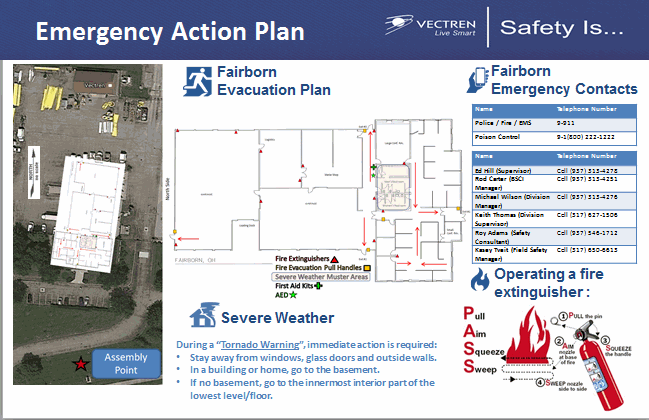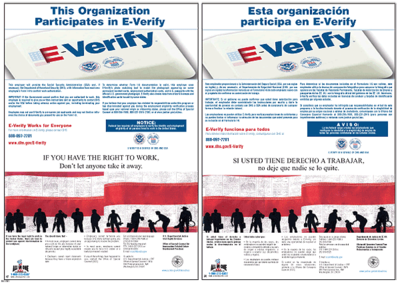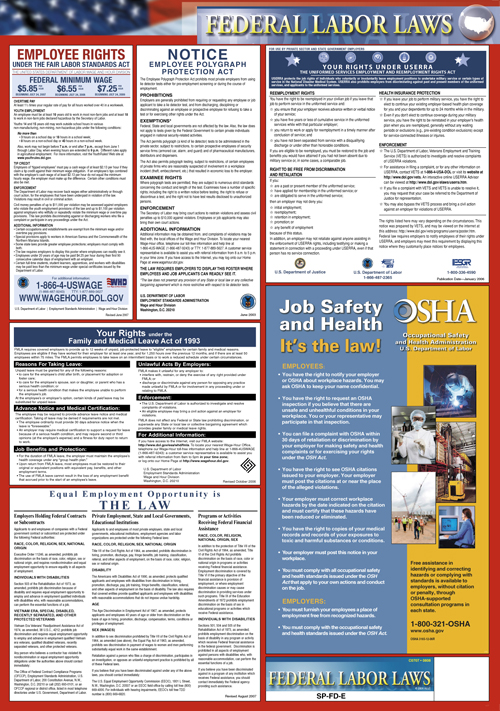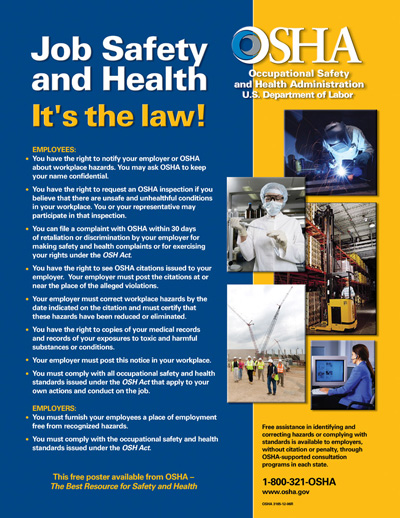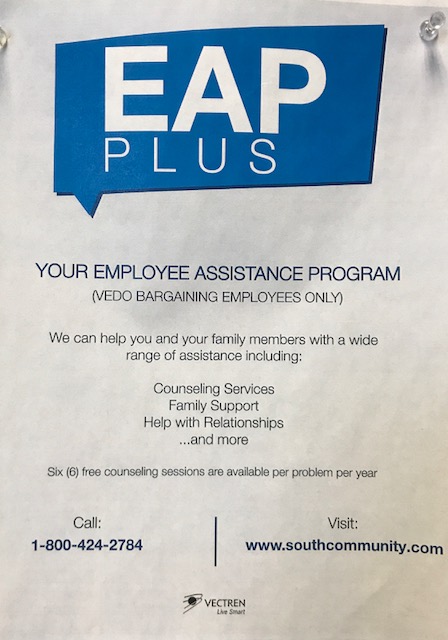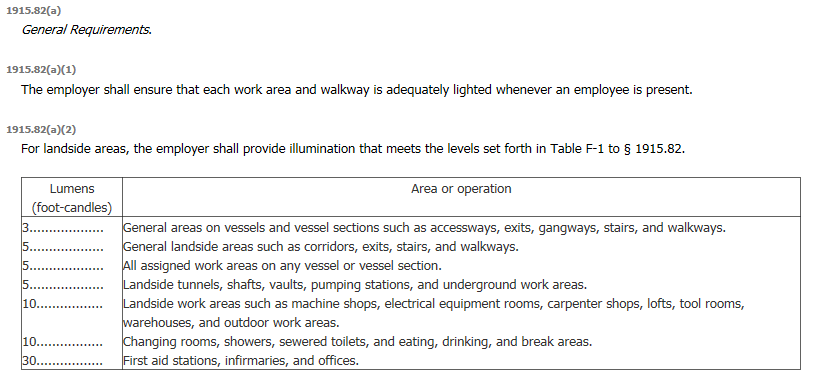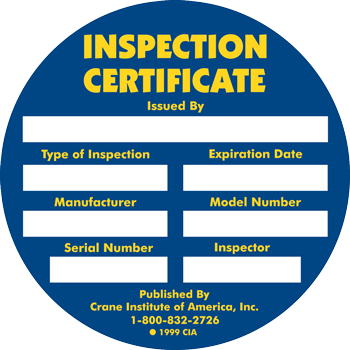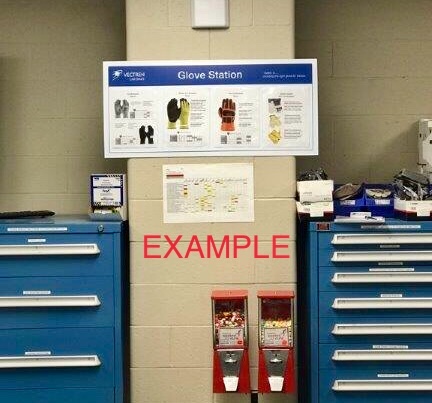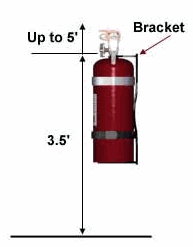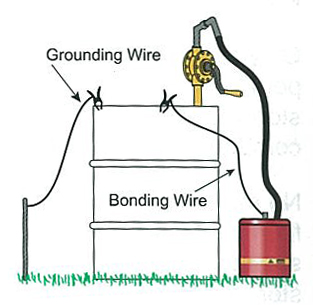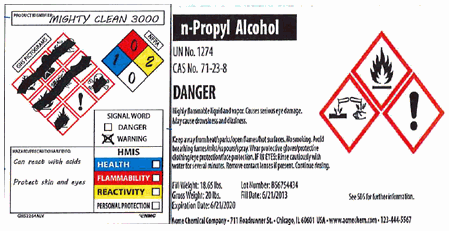Title Page
-
Audit Title (ex. 2016 Annual Safety Audit:)
-
Division/District/Area
- A.B. Brown
- F.B. Culley
- Volkman Solar Field
- Troy Solar Field
- Oak Hill Solar Field
-
Area
- Drum
- Boiler
- Condensor
- Bottom Ash
- Fly Ash
- Scrubber
- Storeroom
- Reheat
- Shop
- Coal Yard
- Switch yard
- MCC
-
Conducted on
-
Audit Conducted by:
- Roy Adams
- Sierra Buse
- Ben Polk
- Kasey Tveit
- Tyler Walker
- Bob Weis
- Bill McDowell
- Shaun Moss
- Claudia Luna
- Jack Long
- Jon Nixon
- Mark Silva
- Trey Steiner
- James Frierson
- Darla Alexander
- James Cagle
- Kathryn Carmichael
- Donna Carroll
- Gary Cornett
- Stephen Garlington
- Jerimy Haase
- Stephen Hampton
- Braulio Huerta
- Kimberly Johnson
- Dustin Krantz
- Roger Krenek
- Patricia Matthew
- Steve Montgomery
- Ronald Morgan
- Marguerite Porsch
- Brett Richardson
- Brendan Riedel
- Dan Robinson
- Richard Robinson
- Kevin Sheffield
- Leo Skiba
- Wayland Smith
- Bradley Stoker
- James Varghese
- Craig Verret
- Jamel Wilson
- Gregory Wise
- Dawn Zapp
- Ryan Friesz
Overview
Audit Overview
-
Area/Division Manager
- Shane Bradford
- Dave Reherman
-
Area Supervisor
- Mike Watson
- Richard Reich
- Marko Vukovich
- Mark McDonald
-
Area/Division Safety Specialist
- Roy Adams
- Sierra Buse
- Ben Polk
- Kasey Tveit
- Tyler Walker
- Bob Weis
- Bill McDowell
- Shaun Moss
- Claudia Luna
- Jack Long
- Jon Nixon
- Mark Silva
- Trey Steiner
- James Frierson
- Darla Alexander
- James Cagle
- Kathryn Carmichael
- Donna Carroll
- Gary Cornett
- Stephen Garlington
- Jerimy Haase
- Stephen Hampton
- Braulio Huerta
- Kimberly Johnson
- Dustin Krantz
- Roger Krenek
- Patricia Matthew
- Steve Montgomery
- Ronald Morgan
- Marguerite Porsch
- Brett Richardson
- Brendan Riedel
- Dan Robinson
- Richard Robinson
- Kevin Sheffield
- Leo Skiba
- Wayland Smith
- Bradley Stoker
- James Varghese
- Craig Verret
- Jamel Wilson
- Gregory Wise
- Dawn Zapp
- Ryan Friesz
-
Area
- Mike Watson
- Richard Reich
- Marko Vukovich
- N/A
Worksite Location
-
Add location
-
Date and Time of Audit
Program Administration
-
Program Administration
-
Are Emergency Numbers Posted and or 911?
-
Is the Emergency Action Plan Posted?
-
Emergency Action Plan example
-
Is the E-Verify Poster (English & Spanish) posted?
-
E-Verify example
-
Is the right to Work Poster (English & Spanish) posted?
-
Right to Work Poster Example
-
Is the OSHA Law Poster Posted and Associated paperwork posted?
-
"It's the Law!" Poster example
-
Is the Emergency Assistance Program information posted?
-
EAP information example
-
Are there any further comments for this section?
-
Click add for each additional observation
Observation
-
Describe issue or observation
-
-
Add media
General Housekeeping
-
• Part Number: 1910
• Part Title: Occupational Safety and Health Standards
• Subpart: D
• Subpart Title: Walking-Working Surfaces
• Standard Number: 1910.22
• Title: General requirements.
• GPO Source: e-CFR
https://www.osha.gov/pls/oshaweb/owadisp.show_document?p_table=STANDARDS&p_id=9714 -
Is General Housekeeping relevant to this audit?
-
Are Administrative areas clean, free of clutter, & generally well kept?
-
• Part Number: 1910
• Part Title: Occupational Safety and Health Standards
• Subpart: D
• Subpart Title: Walking-Working Surfaces
• Standard Number: 1910.22
• Title: General requirements.
• GPO Source: e-CFR
1910.22(a)(1)
All places of employment, passageways, storerooms, service rooms, and walking-working surfaces are kept in a clean, orderly, and sanitary condition. -
Are the Power and electrical panel(s) clear of obstruction and in good condition?
-
• Part Number: 1910
• Part Title: Occupational Safety and Health Standards
• Subpart: S
• Subpart Title: Electrical
• Standard Number: 1910.303
• Title: General.
• GPO Source: e-CFR
https://www.osha.gov/pls/oshaweb/owadisp.show_document?p_table=STANDARDS&p_id=9880 -
Is Exit lighting present and functional?
-
• Part Number: 1910
• Part Title: Occupational Safety and Health Standards
• Subpart: E
• Subpart Title: Means of Egress
• Standard Number: 1910.37
• Title: Maintenance, safeguards, and operational features for exit routes.
• GPO Source: e-CFR
https://www.osha.gov/pls/oshaweb/owadisp.show_document?p_table=standards&p_id=9725 -
Is the condition of office furniture in good shape and safe to use?
-
Are lay down yards well maintained and free of clutter?
-
Are scrap recycling cages neat and orderly?
- Yes
- No, Contact recycling for scrap removal
-
• Part Number: 1910
• Part Title: Occupational Safety and Health Standards
• Subpart: D
• Subpart Title: Walking-Working Surfaces
• Standard Number: 1910.22
• Title: General requirements.
• GPO Source: e-CFR
https://www.osha.gov/pls/oshaweb/owadisp.show_document?p_table=STANDARDS&p_id=9714 -
Are garage/shop areas well maintained, clean, and clutter-free?
-
• Part Number: 1910
• Part Title: Occupational Safety and Health Standards
• Subpart: D
• Subpart Title: Walking-Working Surfaces
• Standard Number: 1910.22
• Title: General requirements.
• GPO Source: e-CFR
https://www.osha.gov/pls/oshaweb/owadisp.show_document?p_table=STANDARDS&p_id=9714 -
Are stairs and handrails in place as necessary?
-
• Part Number: 1926
• Part Title: Safety and Health Regulations for Construction
• Subpart: X
• Subpart Title: Stairways and Ladders
• Standard Number: 1926.1052
• Title: Stairways.
• GPO Source: e-CFR
https://www.osha.gov/pls/oshaweb/owadisp.show_document?p_table=STANDARDS&p_id=10838 -
Are work areas adequately lit for the jobs specified?
-
• Part Number: 1915
• Part Title: Occup. Safety and Health Standards for Shipyard Employment
• Subpart: F
• Subpart Title: General Working Conditions
• Standard Number: 1915.82
• Title: Lighting.
• GPO Source: e-CFR -
Are there any further comments for this section?
-
Click add for each additional observation
Observation
-
Describe issue or observation
-
-
Add media
Handling & Storage of Materials
-
• Part Number: 1910
• Part Title: Occupational Safety and Health Standards
• Subpart: N
• Subpart Title: Materials Handling and Storage
• Standard Number: 1910.176
• Title: Handling materials - general
https://www.osha.gov/pls/oshaweb/owadisp.show_document?p_table=STANDARDS&p_id=9824 -
Is the Handling & Storage of Materials relevant to this audit?
-
Where mechanical handling equipment is used, sufficient safe clearances are allowed for aisles, at loading docks, through doorways and wherever turns or passages are present? 1910.176(a)
-
Storage of material does not create a hazard. Bags, containers, bundles, etc., stored in tiers are stacked, blocked, interlocked and limited in height so that they are stable and secure against sliding or collapse. 1910.176(b)
-
Storage areas are kept free from accumulation of materials that constitute hazards from tripping, fire, explosion, or pest harborage. 1910.176(c)
-
Are the heaviest items stored on the bottom?
-
Are there any further comments for this section?
-
Click add for each issue or observation
Observation
-
Describe issue or observation
-
-
Add media
Forklift
-
• Part Number: 1910
• Part Title: Occupational Safety and Health Standards
• Subpart: N
• Subpart Title: Materials Handling and Storage
• Standard Number: 1910.178
• Title: Powered industrial trucks.
• Appendix: A
• GPO Source: e-CFR
https://www.osha.gov/pls/oshaweb/owadisp.show_document?p_id=9828&p_table=standards -
Are there forklifts present that are relevant to this audit?
-
Do truck(s) bear a label or some other identifying mark indicating approval by a testing laboratory. See paragraph (a)(7) of this section and paragraph 405 of "American National Standard for Powered Industrial Trucks, Part II, ANSI B56.1-1969", which is incorporated by reference in paragraph (a)(2) of this section and which provides that if the powered industrial truck is accepted by a nationally recognized testing laboratory it should be so marked. 1910.178(a)(3)
-
Inspection sticker sample...
-
Is the vehicle in proper operating condition as specified by the manufacturer?<br><br>Meaning:<br><br>No modifications and/or additions which affect capacity and safe operation been performed by the customer or user without manufacturers prior written approval? 1910.178(a)(4)<br><br>Example: disabled back-up alarm or strobes
-
Battery charging installations shall be located in areas designated for that purpose. 1910.178(g)(1)
-
Forklifts have been inspected on days of use
-
Is the owner's manual present on the equipment?
-
Is the Vehicle being operated during the time of the audit?
-
Is the driver wearing seatbelt in accordance with Company policy?
-
Are there any further comments for this section?
-
Click add for each additional issue or observation
Observation
-
Describe issue or observation
-
-
Add media
Ladders
-
Part Number: 1926
• Part Title: Safety and Health Regulations for Construction
• Subpart: X
• Subpart Title: Stairways and Ladders
• Standard Number: 1926.1053
• Title: Ladders.
https://www.osha.gov/pls/oshaweb/owadisp.show_document?p_table=standards&p_id=10839 -
Are there ladders present that are relevant to this audit?
-
Does ladder meet Company specifications for type and capability? (Min. 300lb, Type 1A)
-
Are ladders stored and secured in a manner where they will not fall or represent a safety hazard?
-
Are Ladder rungs, cleats, and steps parallel, level, and uniformly spaced when the ladder is in position for use. 1926.1053(a)(2)
-
Are Ladder components surfaced so as to prevent injury to an employee from punctures or lacerations, and to prevent snagging of clothing. 1926.1053(a)(11)
-
Ladders shall be used only on stable and level surfaces unless secured to prevent accidental displacement. 1926.1053(b)(6)
-
Are Ladders inspected by a competent person for visible defects on a periodic basis and after any occurrence that could affect their safe use. 1926.1053(b)(15)
-
Does Each employee use at least one hand to grasp the ladder when progressing up and/or down the ladder? 1926.1053(b)(21
-
Are there any further comments for this section?
-
Click add for each additional issue or observation
Observation
-
Describe issue or observation
-
-
Add media
Personal Protective Equipment (PPE)
-
• Part Number: 1926
• Part Title: Safety and Health Regulations for Construction
• Subpart: E
• Subpart Title: Personal Protective and Life Saving Equipment
• Standard Number: 1926.95
• Title: Criteria for personal protective equipment.
• GPO Source: e-CFR
https://www.osha.gov/pls/oshaweb/owadisp.show_document?p_table=STANDARDS&p_id=10658 -
Are there PPE needs present that are relevant to this audit?
-
Is there adequate eye protection available for all employees?
-
Are there Face Shields available for operations that require them? (grinding etc.)
-
Is there an adequate availability of hand protection that is varied for required jobs? (i.e. Cut resistant, thermal, etc.)
-
Are there SCBA tanks present?
-
Has SCBA tank received monthly inspections?
-
Has the SCBA tank been hydrostatically tested?
-
Select date
-
Is all SCBA gear present? (i.e. harness, tank, rescue rope?)
-
Are multiple styles of gloves available in storeroom for different purposes?
-
Is a glove visual management board displayed conspicuously preferably near where gloves are issued?
-
-
Is there adequate head protection such as hard hats for employees?
-
Are employees wearing safety shoes as deemed appropriate for the job/conditions?
-
Have employees been equipped with flash gear?
-
Do employees have access to high visibility traffic vests?
-
Are personal fall arrest systems available for work at heights?
-
Is there a variety of hearing protection available for employees to choose from?
-
Are there any further comments for this section?
-
Click add for each additional issue or observation
Observation
-
Describe issue or observation
-
-
Add media
Power Tools
-
• Part Number: 1926
• Part Title: Safety and Health Regulations for Construction
• Subpart: I
• Subpart Title: Tools - Hand and Power
• Standard Number: 1926.302
• Title: Power-operated hand tools.
• Applicable Standards: 1910.244(b)
• GPO Source: e-CFR
https://www.osha.gov/pls/oshaweb/owadisp.show_document?p_table=standards&p_id=10690 -
Are power tools present and applicable to this audit?
-
Are pneumatic tools in use?
-
Are pneumatic power tools secured to the hose or whip by some positive means to prevent the tool from becoming accidentally disconnected?
-
Are safety clips or retainers securely installed and maintained on pneumatic impact (percussion) tools to prevent attachments from being accidentally expelled?
-
Are electric tools in use?
-
Are all electric power operated tools present double-insulated type or grounded?
-
Are all electrical cords and plugs in use in good use and functional?
-
Are electric cords being used for hoisting or lowering tools?
-
Are cords in good/serviceable condition?
-
Are cords stored neatly and in a manner to prevent damage?
-
Are fuel powered tools in use?
-
Are all fuel powered tools stopped while being refueled, serviced, or maintained, and fuel shall be transported, handled, and stored in accordance with Vectren policy?
-
When fuel powered tools are used in enclosed spaces, has the area been well ventilated and appropriate PPE been provided?
-
Are tools neatly stored when not in use?
-
Are GFCIs (Ground Fault Circuit Interrupters available for electrical tool use?
-
Are mechanical safeguards in available and in use during tool operation?
-
Are the correct tools being used for the job at hand?
-
Are there any further comments for this section?
-
Click add for each additional issue or observation
Observation
-
Describe issue or observation
-
-
Add media
Hand Tools
-
• Part Number: 1926
• Part Title: Safety and Health Regulations for Construction
• Subpart: I
• Subpart Title: Tools - Hand and Power
• Standard Number: 1926.300
• Title: General requirements.
• Applicable Standards: 1910.212(a)(3); 1910.212(a)(5); 1910.212(b)
• GPO Source: e-CFR
https://www.osha.gov/pls/oshaweb/owadisp.show_document?p_table=STANDARDS&p_id=10688 -
Are hand tools present and applicable to this audit?
-
All hand and power tools and similar equipment, whether furnished by the employer or the employee, shall be maintained in a safe condition
-
Personal protective equipment. Employees using hand and power tools and exposed to the hazard of falling, flying, abrasive, and splashing objects, or exposed to harmful dusts, fumes, mists, vapors, or gases ARE provided with the particular personal protective equipment necessary to protect them from the hazard.
-
Are all tools neatly stored when not in use?
-
Are there any further comments for this section?
-
Click add for each additional issue or observation
Observation
-
Describe issue or observation
-
-
Add media
Fire Prevention/Safety
-
• Part Number: 1910
• Part Title: Occupational Safety and Health Standards
• Subpart: L
• Subpart Title: Fire Protection
• Standard Number: 1910.157
• Title: Portable fire extinguishers.
• GPO Source: e-CFR
1910.157(c)(1) The employer shall provide portable fire extinguishers and shall mount, locate and identify them so that they are readily accessible to employees without subjecting the employees to possible injury
1910.157(c)(4) The employer shall assure that portable fire extinguishers are maintained in a fully charged and operable condition and kept in their designated places at all times except during use.
1910.157(e)(1) The employer shall be responsible for the inspection, maintenance and testing of all portable fire extinguishers in the workplace.
https://www.osha.gov/pls/oshaweb/owadisp.show_document?p_table=STANDARDS&p_id=9811#1910.157(g)(1) -
Fire Prevention/Safety
-
Are Fire instructions and evacuation routes posted?
-
Are fire extinguishers identified and inspected monthly?
-
Are access to hydrants and fire extinguishers clear and not encumbered?
-
To avoid putting workers in danger, fire extinguishers should be located throughout the workplace and readily accessible in the event of a fire. [29 CFR 1910.157(c)] You can usually find them in hallways, laundry rooms, meeting rooms, kitchens, mechanical/electrical rooms, and near exit doors.
Locations that contain Class B flammables, such as workshops, storage areas, research operations, garages, warehouses, or service and manufacturing areas requires that all employees have access to an extinguisher within 50 feet travel-distance. [29 CFR 1910.157(d)(4)] -
Are "No Smoking" signs posted and enforced where necessary?
-
Are electrical receptacles covered and operable?
-
1910.303(b)(1) Electric equipment shall be free from recognized hazards that are likely to cause death or serious physical harm to employees. Safety of equipment shall be determined using the following considerations:
1910.303(b)(1)(viii) factors that contribute to the practical safeguarding of persons using or likely to come in contact with the equipment.
1910.303(b)(7)(i) Unused openings in boxes, raceways, auxiliary gutters, cabinets, equipment cases, or housings shall be effectively closed to afford protection substantially equivalent to the wall of the equipment. -
Are there any further comments for this section?
-
Click add for each additional issue or observation
Observation
-
Describe issue or observation
-
-
Add media
Flammable gases & liquids
-
• Part Number: 1910
• Part Title: Occupational Safety and Health Standards
• Subpart: H
• Subpart Title: Hazardous Materials
• Standard Number: 1910.106
• Title: Flammable liquids.
• GPO Source: e-CFR
https://www.osha.gov/pls/oshaweb/owadisp.show_document?p_id=9752&p_table=standards -
Is flammable gases & liquids relevant to this audit?
-
Are compressed gas cylinders present?
-
Are cylinders stored in upright positions and immobilized by chains or other means to prevent them from being knocked over?
-
Are cylinders stored away from electrical connections, gas flames or other sources of ignition, and substances such as flammable solvents and combustible waste material?
-
Are oxygen and fuel gas cylinders separated by a minimum of 20 feet when in storage?
-
Are cylinders stored away from incompatibles, excessive heat, continuous dampness, salt or other corrosive chemicals, and any areas that may subject them to damage?
-
Do all compressed gas cylinders have their contents and precautionary labeling clearly marked on their exteriors?
-
Are all compressed gas cylinder valve covers in place when cylinders are not in use?
-
Are all compressed gas cylinders stored so they do not interfere with exit paths?
-
Are charged or full cylinders labeled and stored away from empty cylinders?
-
• Part Number: 1910
• Part Title: Occupational Safety and Health Standards
• Subpart: H
• Subpart Title: Hazardous Materials
• Standard Number: 1910.101
• Title: Compressed gases (general requirements).
• GPO Source: e-CFR
https://www.osha.gov/pls/oshaweb/owadisp.show_document?p_table=STANDARDS&p_id=9747 -
Are flammable materials being stored present?
-
Are cabinets labeled “Flammable –Keep Fire Away”? 1910.106 (d)(3)(ii)
-
Have all combustible materials been removed from the flammable cabinet?<br>Company best practices require non-combustible materials (cardboard, paper, etc.) be removed from flammable cabinets.
-
Is the door raised at least 2 inches above the bottom of the<br>cabinet? 1910.106 (d)(3)(ii)(a)
-
Are the liquids stored in tanks or closed containers? 1910.106 (e)(2)(ii)
-
Are an adequate number of portable fire extinguishers and control equipment provided for the special hazards that exist? 1910.106 (e)(5)(i)
-
Are drums storing flammable material bonded and grounded appropriately?
-
-
Are there portable gas cans on-site?
-
Are all portable gas cans metal with proper safety features? (Venting, self closing cap, etc.) per Vectren Policy?
-
Are there any further comments or concerns for this audit?
-
Click add for each additional issue or observation
Observation
-
Describe issue or observation
-
-
Add media
HAZCOM
-
Check if there are hazardous materials onsite that would be covered under HAZCOM regulations
-
Are all containers (including secondary containers) of hazardous chemicals in the workplace labeled, tagged, or marked with the following information? [29 CFR 1910.1200(f)(1)]
-
Labeling Example
-
2. Are posters or signs with SDS database contact information available to all employees?
-
3. Please select 5 chemicals to spot check to ensure they are in the CNP/VEC SDS database.
(Include pictures of chemicals to help with verification) Update database with chemicals not found.
Chemical:
-
Onsite Chemical - (include photo)
-
Photo of Chemical Label
-
Is onsite chemical's SDS located in the company database?
-
Are there any further comments for this section?
-
Click add for each additional issue or observation
Observation
-
Describe issue or observation
-
-
Add media
Welding & Cutting
-
• Part Number: 1926
• Part Title: Safety and Health Regulations for Construction
• Subpart: J
• Subpart Title: Welding and Cutting
• Standard Number: 1926 Subpart J
• Title: Authority for 1926 Subpart J
• GPO Source: e-CFR
https://www.osha.gov/pls/oshaweb/owadisp.show_document?p_table=STANDARDS&p_id=10914 -
Are there welding & cutting operations that are relevant to this audit?
-
Are there Screens & Shields available during welding/cutting/grinding operations?
-
Is there appropriate PPE available for these operations? (i.e. gloves, apron, goggles, welding helmet?)
-
Is equipment in good condition?
-
Is electrical equipment appropriately grounded?
-
Are power cables protected from hot slag and debris?
-
Are appropriate fire extinguishers near by the operations?
-
Has all flammable material been protected?
-
Are compressed gas cylinders present?
-
Are cylinders chained/secured upright (either on cart or in storage)?
-
Are oxygen/acetylene tanks stored separately (at least 20 ft apart) when not in use? <br>* Tanks can be stored together on a cart provided a solid 1/2 hour rated fire barrier (minimum 5' tall) permanently fixed to the cart between the tanks
-
Are all cylinder caps in place for tanks in storage?
-
Are regulators removed from tanks not in use?
-
Are there any further comments for this section?
-
Click add for each additional issue or observation
Observation
-
Describe issue or observation
-
-
Add media
Fleet Safety
-
Are there vehicles or trailers available that are relevant to this audit?
-
Has Circle of Safety been observed on vehicles present?
-
Are vehicles backed in or pulled through to park where appropriate? (parked per company policy)
-
Vehicles clean and clutter free?
-
Current insurance card available in vehicle?
-
Trailers in good operating condition?
-
Loads present appropriately secured?
-
Are there any further comments for this section?
-
Click add for each additional issue or observation
Observation
-
Describe issue or observation
-
-
Add media
Confined Spaces
-
This audit form is to ensure confined space locations are properly marked within Operating Centers
IF CONFINED SPACE OPERATIONS ARE IN PROGRESS DURING AUDIT COMPLETE SEPERATE CONFINED SPACE AUDIT FORM
https://www.osha.gov/FedReg_osha_pdf/FED20150504.pdf -
Are there any Confined Spaces identified in the area?
-
Is the area identified by Confined Space signage?
-
Is the location identified by a Confined Space ID number?
Miscellaneous Findings
-
Are there any further comments or concerns for this audit?
-
Click add for each additional issue or observation
Observation
-
Describe issue or observation
-
-
Add media






